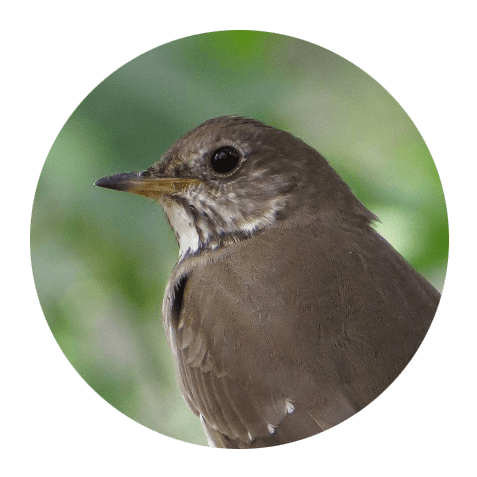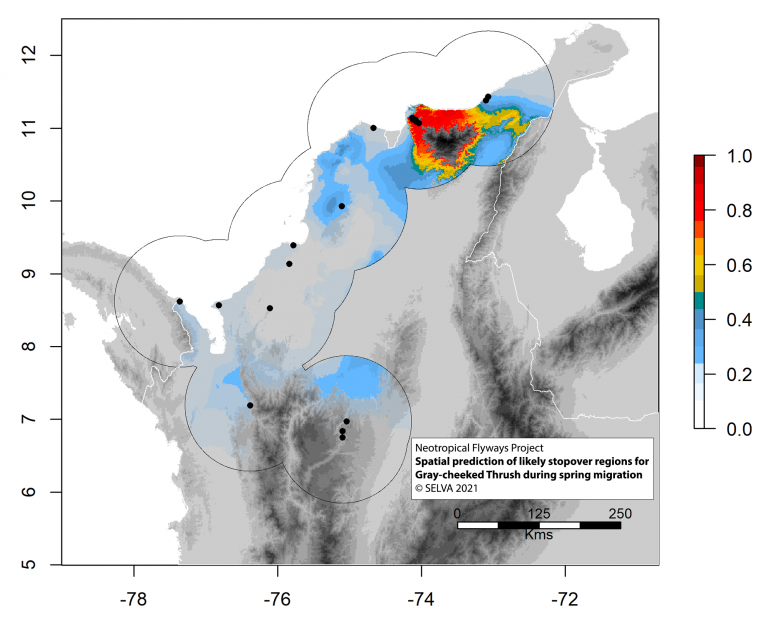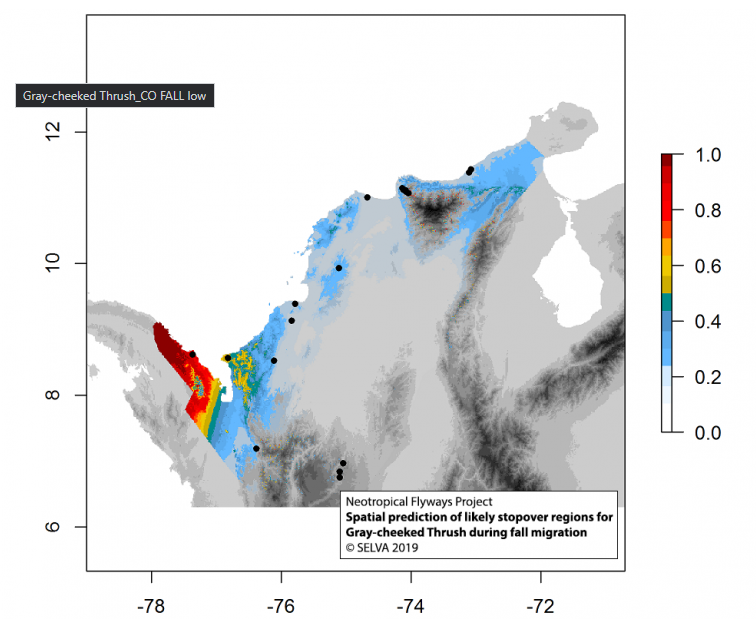Gray-cheeked Thrush
Thrushes / Mirlas
True globe trotters, most Gray-cheeked Thrush migrate between the Amazon and the Boreal forest, covering >20,000 km a year. They don’t hang around either, with birds making the most of resource rich stopover sites to fly non-stop for thousands of kilometers in just a matter of days, as has been shown for birds stopping over in the Sierra Nevada de Santa Marta in north-east Colombia. Indeed, a recent study (see Publications) found that a considerable percentage of the entire world population concentrates in the Sierra Nevada before launching themselves across the Caribbean Sea direct to North America. This long hop strategy means Gray-cheeked Thrush are fairly scarce in Central America, unlike their abundant relation, the Swainson’s Thrush.


